Let’s be honest – we’re obsessed with cat stories. Whether it’s a viral video of a kitten or a heart-wrenching rescue tale, something about cats just gets to us. Recent data shows that cat-related content generates over 2 billion views annually across digital platforms according to VidIQ analytics, and honestly? I get it. I discovered this obsession when I was seven, completely lost in a story about a tabby that made me laugh and cry in the same chapter. That feeling hasn’t faded – if anything, it’s gotten stronger as I’ve found more incredible cat stories.
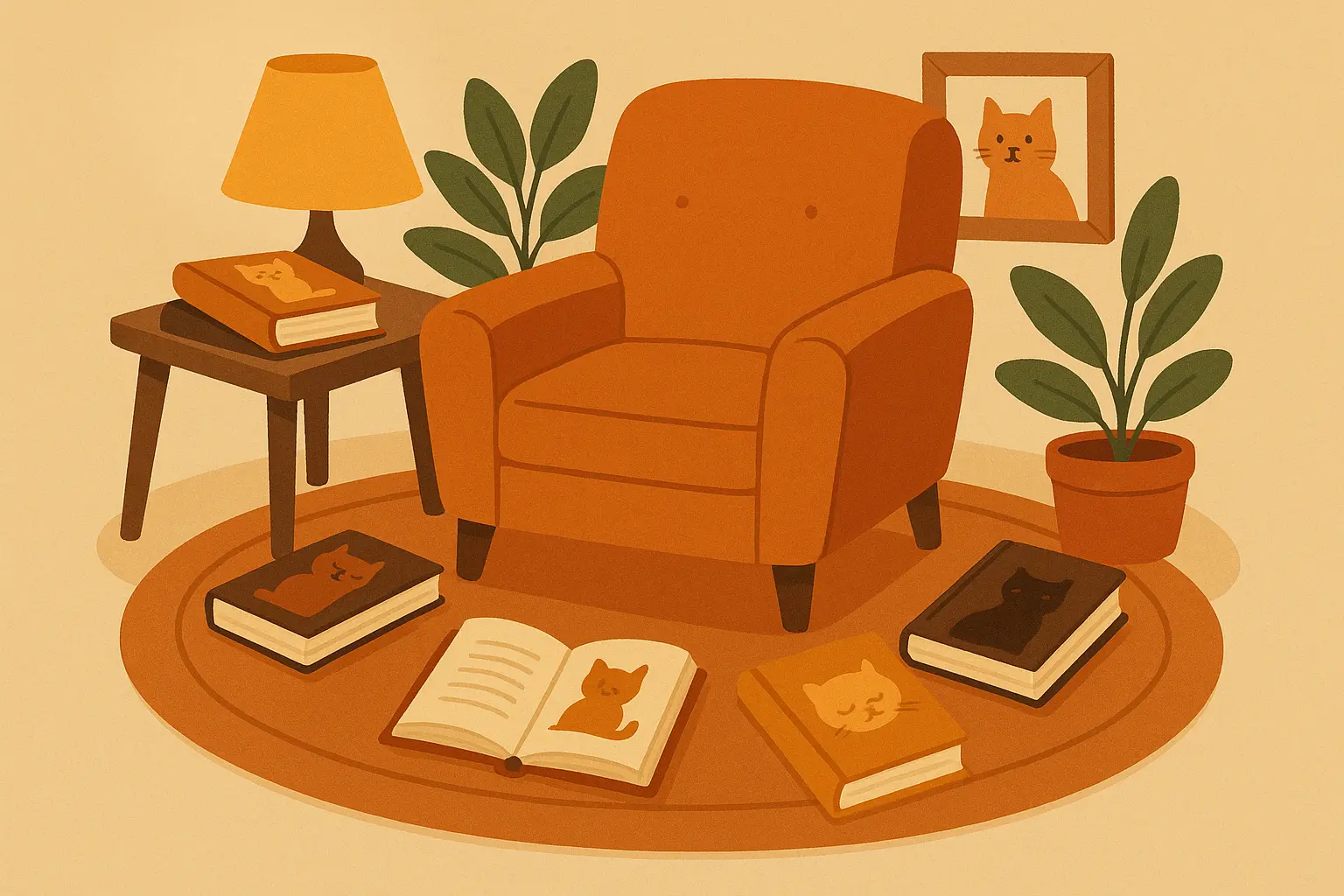
Here are 25 cat stories I think you’ll absolutely love. I’ve organized them into categories that make sense – from classic tales that have been making people cry for decades to modern rescue stories that’ll restore your faith in humanity. Whether you want to laugh, cry, think deep thoughts, or just escape into a good story, there’s something here for you.
Just like these amazing cat stories show us the power of great characters, understanding how to write a story effectively can help you appreciate the craft behind these tales.
Table of Contents
-
What Makes a Cat Story Actually Good
-
Classic Literary Cat Stories (4 Stories)
-
Contemporary Cat Rescue Stories (5 Stories)
-
Fantasy and Science Fiction Cat Stories (4 Stories)
-
Children’s and Young Adult Cat Stories (4 Stories)
-
Mystery and Detective Cat Stories (4 Stories)
-
Philosophical and Literary Cat Stories (4 Stories)
-
How to Pick Your Next Cat Story
-
Why These Stories Actually Matter
-
Final Thoughts
TL;DR
-
Cat rescue stories are basically therapy in book form – they’ll make you ugly-cry but in the best way
-
Classic cat literature gives you all the feels while making you sound smart at dinner parties
-
Fantasy cat stories let your imagination run wild while keeping the cats actually cat-like
-
Kids’ cat stories are perfect for teaching empathy (and reading skills) without being preachy
-
Mystery cats are surprisingly good detectives – their nosiness finally pays off
-
Philosophical cat stories will make you question everything while making you want to adopt seventeen cats
-
Each type hits different depending on what your soul needs right now
What Makes a Cat Story Actually Good
Look, when I’m picking a cat story, I’m not running through some academic checklist. I just want to know: Will this make me feel something? Is the cat actually cat-like, or just a human in a fur suit? And honestly, will I laugh, cry, or stay up way too late because I can’t put it down?
Here’s what I’ve learned makes cat stories stick with you:
The cat has to feel real. We’ve all lived with cats – we know they’re weird, independent, and somehow both aloof and needy. The best stories capture that complexity without turning cats into fuzzy humans.
There’s got to be heart. Whether it’s a rescue story or a fantasy adventure, something has to matter. The best cat stories use our love for these mysterious creatures to explore bigger themes about love, loss, independence, and what it means to care for someone (or some cat) who doesn’t always make it easy.
The writing can’t talk down to us. Whether it’s for kids or adults, good cat stories respect their readers. They might be simple, but they’re not simplistic.
It should tell us something true. The stories that stay with me reveal something genuine about cats, humans, or the weird wonderful relationship between us.
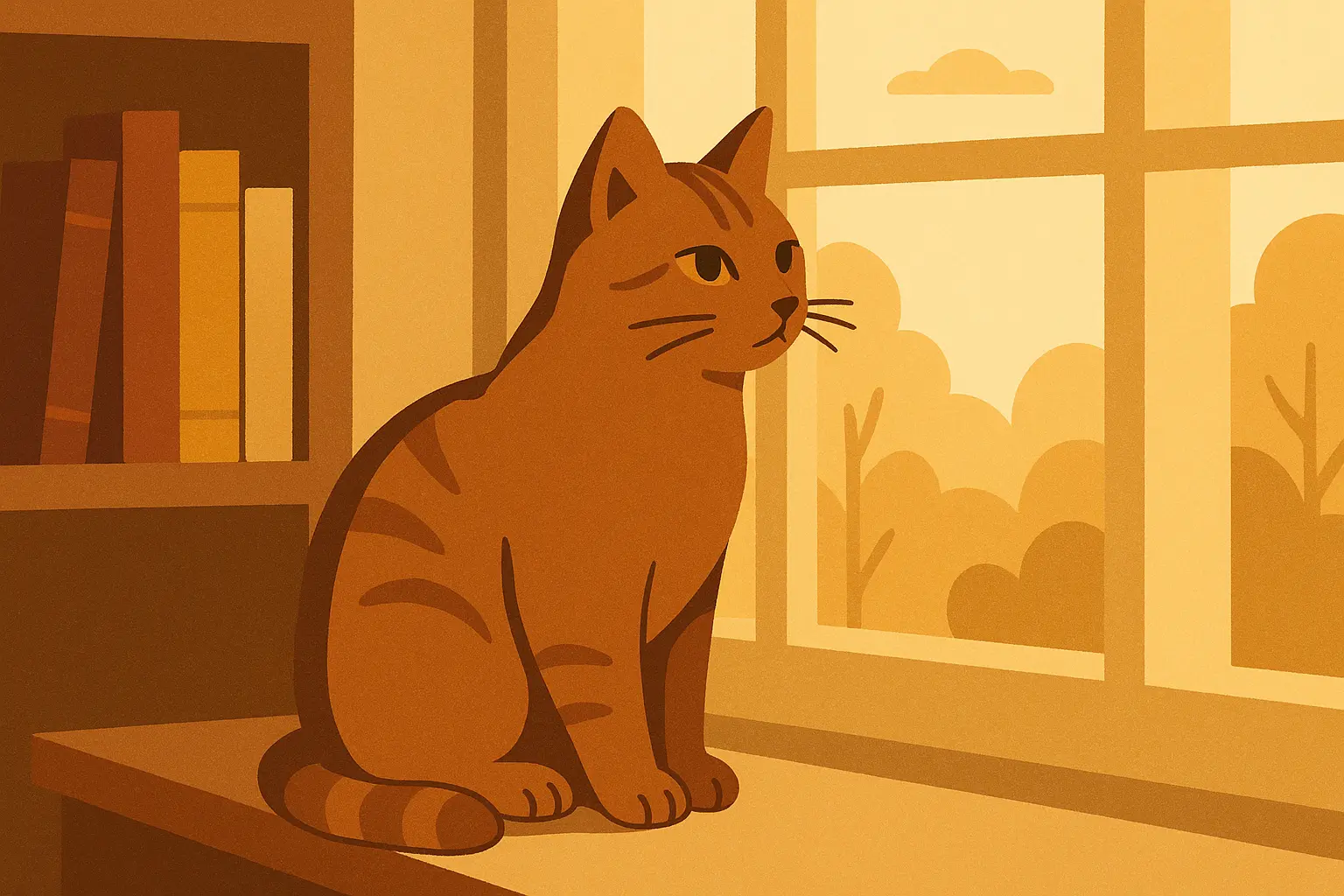
The best cat stories work because they capture something we all recognize – that moment when your cat does something that makes you wonder what they’re really thinking, or when they comfort you in ways that feel almost magical. These stories take those everyday moments and show us they’re actually pretty extraordinary.
Similar to how short story examples demonstrate different ways to tell a story, cat stories use all kinds of approaches to capture what makes our feline friends so special.
Classic Literary Cat Stories
These are the stories that started it all – the ones that proved cats could be serious literary characters, not just cute sidekicks. They’re older, sure, but they’ve lasted because they nail something essential about what cats are really like.
1. “The Cat Who Walked by Himself” by Rudyard Kipling
This is the story that explains why your cat acts like they’re doing you a favor by living with you. Set way back when humans first started domesticating animals, it shows how the cat negotiated his own deal – he’ll hang around and catch mice, but he’s keeping his independence, thank you very much.
Kipling totally got cats. He understood that unlike dogs, cats chose us as much as we chose them. The cat in this story basically says, “I’ll be tame when I want to be tame, and wild when I want to be wild.” Anyone who’s ever had a cat look at them like they’re staff rather than owner will recognize this attitude immediately.
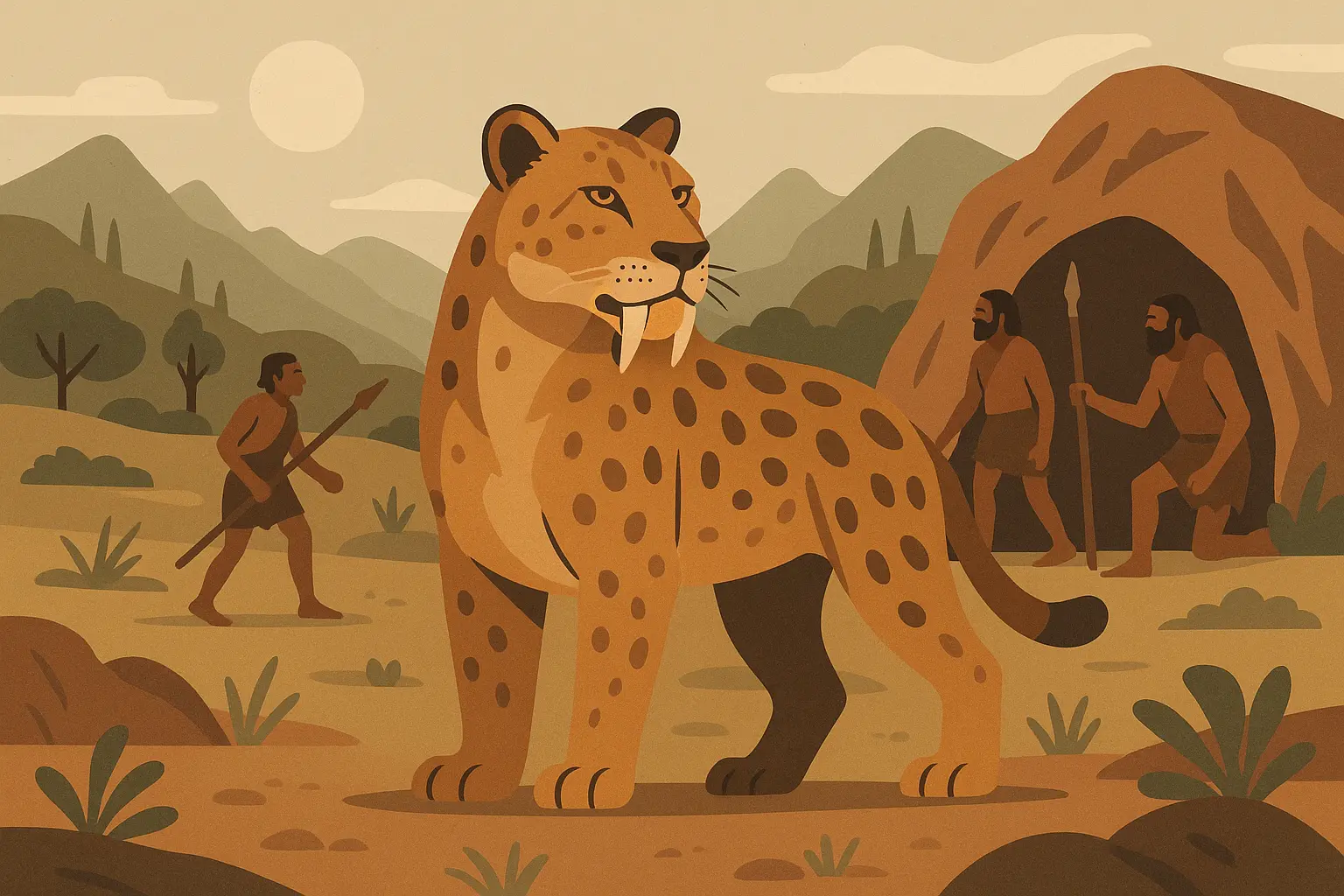
What I love about this story is how it celebrates cat independence instead of trying to change it. It’s basically saying, “This is who cats are, and that’s exactly why they’re amazing.”
2. “Tobermory” by Saki (H.H. Munro)
Okay, imagine if your cat could suddenly talk and decided to spill ALL the tea about your family and friends. That’s basically “Tobermory,” and it’s as hilariously mortifying as it sounds.
A house cat learns to speak at a fancy party and immediately starts sharing everyone’s embarrassing secrets. The genius of this story is that Tobermory isn’t being malicious – he’s just being honest in that brutally direct way cats are. He doesn’t understand why humans get so upset when he mentions things he’s observed.
This story works because anyone who’s lived with a cat knows they see everything. They’re always watching, always judging, always there when you’re having that embarrassing phone conversation. Saki just imagined what would happen if they could finally comment.
Here’s why it’s brilliant: When Tobermory casually mentions Mrs. Cornett’s affair, everyone freaks out not because it’s news, but because he said it out loud. The cat doesn’t lie or gossip – he just states facts without understanding human social rules about secrets. It’s peak cat behavior: brutally honest and completely unbothered by human drama.
3. “The Black Cat” by Edgar Allan Poe
Fair warning: this one’s dark. Poe takes the superstitions about black cats and turns them into a psychological horror story about guilt and karma that’ll stick with you.
The story follows a guy whose relationship with his black cats reflects his complete moral breakdown. What makes it so unsettling is how the cats become symbols of his conscience – they’re always there, watching, reminding him of what he’s done.
Poe understood that cats can be genuinely spooky. They move silently, appear out of nowhere, and have those eyes that seem to see right through you. In this story, that mysterious quality becomes terrifying because the narrator knows he deserves whatever cosmic justice might be coming for him.
4. “Old Possum’s Book of Practical Cats” by T.S. Eliot
Yes, this is what the musical “Cats” is based on, but the original poems are so much better than the weird movie made you think. Eliot created an entire society of cats, each with distinct personalities that feel both completely feline and somehow human.
These aren’t just cute poems about kitties. Eliot was a serious poet who brought all his skills to creating characters like Macavity the Mystery Cat (basically a feline criminal mastermind) and Old Deuteronomy (the wise elder cat who’s seen it all).
What’s amazing is how Eliot captures real cat behaviors – the way they move, the sounds they make, their social dynamics – and turns them into poetry that works for both kids and adults. The language is playful but sophisticated, just like cats themselves.
Contemporary Cat Rescue Stories
These are the stories that’ll make you ugly-cry in the best possible way. They’re based on real experiences and show how cats and humans can literally save each other. Keep tissues handy.
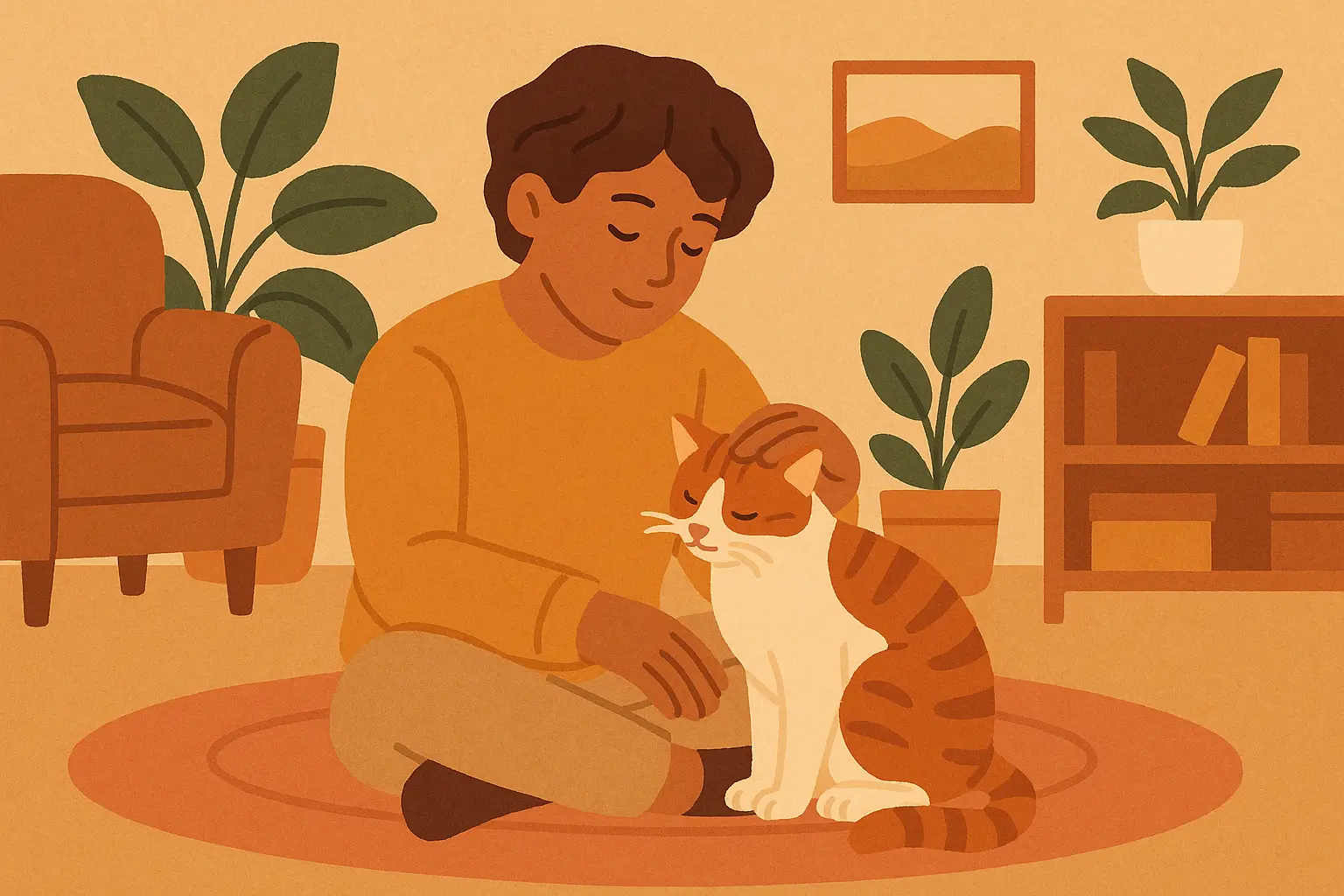
5. “A Street Cat Named Bob” by James Bowen
This is the true story that’ll restore your faith in both cats and humans. A guy struggling with drug addiction finds an injured ginger cat, and taking care of Bob literally saves his life.
What makes this story so powerful is its honesty. Bowen doesn’t sugarcoat his addiction or pretend Bob magically fixed everything. Instead, he shows how having someone (even a cat) who needed him gave him a reason to get clean and stay clean.
Bob isn’t some perfect therapy cat – he’s a real street cat with attitude and quirks. But the daily routine of caring for him – feeding, grooming, making sure he’s safe – gave Bowen structure when his life had none. It’s a beautiful example of how responsibility for another living being can become a lifeline.
6. “Dewey: The Small-Town Library Cat” by Vicki Myron
The true story of a kitten found nearly frozen in a library book drop who became the heart of an entire community. Dewey lived at the Spencer Public Library for nineteen years and touched thousands of lives.
This isn’t just a cute story about a library cat. Dewey became a symbol of hope and resilience for the whole town of Spencer, Iowa, especially during tough economic times. People would come to the library just to see him, and he somehow knew exactly who needed comfort most.
What gets me about this story is how one cat could affect so many people. Kids learning to read would practice with Dewey. Lonely elderly people found companionship. Grieving families found comfort. The library documented over 1,000 letters from visitors sharing how Dewey helped them through difficult times.
The real impact: Library circulation increased by 30% during Dewey’s time there, and people traveled hundreds of miles just to meet him. One little girl with selective mutism spoke her first words in months to Dewey. That’s the kind of magic that only seems to happen with cats.
7. “The Traveling Cat Chronicles” by Hiro Arikawa
Get ready to have your heart completely destroyed by this beautiful Japanese novel. A man with terminal illness travels across Japan with his cat Nana, trying to find his beloved companion a new home.
The story is told partly from Nana’s perspective, and somehow Arikawa nails the cat voice without making it too human. Nana’s thoughts feel genuinely feline – focused on comfort, routine, and his deep but uncomplicated love for his human.
What makes this story special is how it explores what we owe the animals who trust us. The man’s determination to find Nana the perfect home shows the depth of their bond and the lengths people will go to keep their promises to their pets, even when it breaks their hearts.
8. “Nine Lives: In Search of the Sacred in Modern India” by William Dalrymple
This book explores various spiritual practices in India, including some incredible stories about sacred temple cats and their role in healing and spiritual practice.
Dalrymple shows how cats in these temple settings aren’t just pets – they’re spiritual companions who participate in religious life. They provide comfort to devotees and seem to understand the sacred nature of the spaces they inhabit.
These stories reveal how different cultures view the human-cat relationship. In these temples, cats serve as bridges between the physical and spiritual worlds, offering a kind of healing that goes beyond the emotional or physical.
9. “The Cat from Hue” by Various Rescue Organizations
These are collected stories about cats rescued from disaster zones and war-torn areas – stories that show incredible feline resilience and the international network of people dedicated to animal rescue.
What strikes me about these stories is how compassion for animals transcends all boundaries. Rescue workers risk their safety to save cats from dangerous situations, while the cats show amazing adaptability and trust in their rescuers.
These narratives highlight how shared concern for animal welfare can unite people across cultures, languages, and countries. They prove that kindness is universal and that the bonds between humans and animals persist even in the worst circumstances.
Fantasy and Science Fiction Cat Stories
These stories let your imagination run wild while keeping the cats actually cat-like. They take everything mysterious and magical about cats and run with it, creating adventures that feel both fantastical and somehow believable.
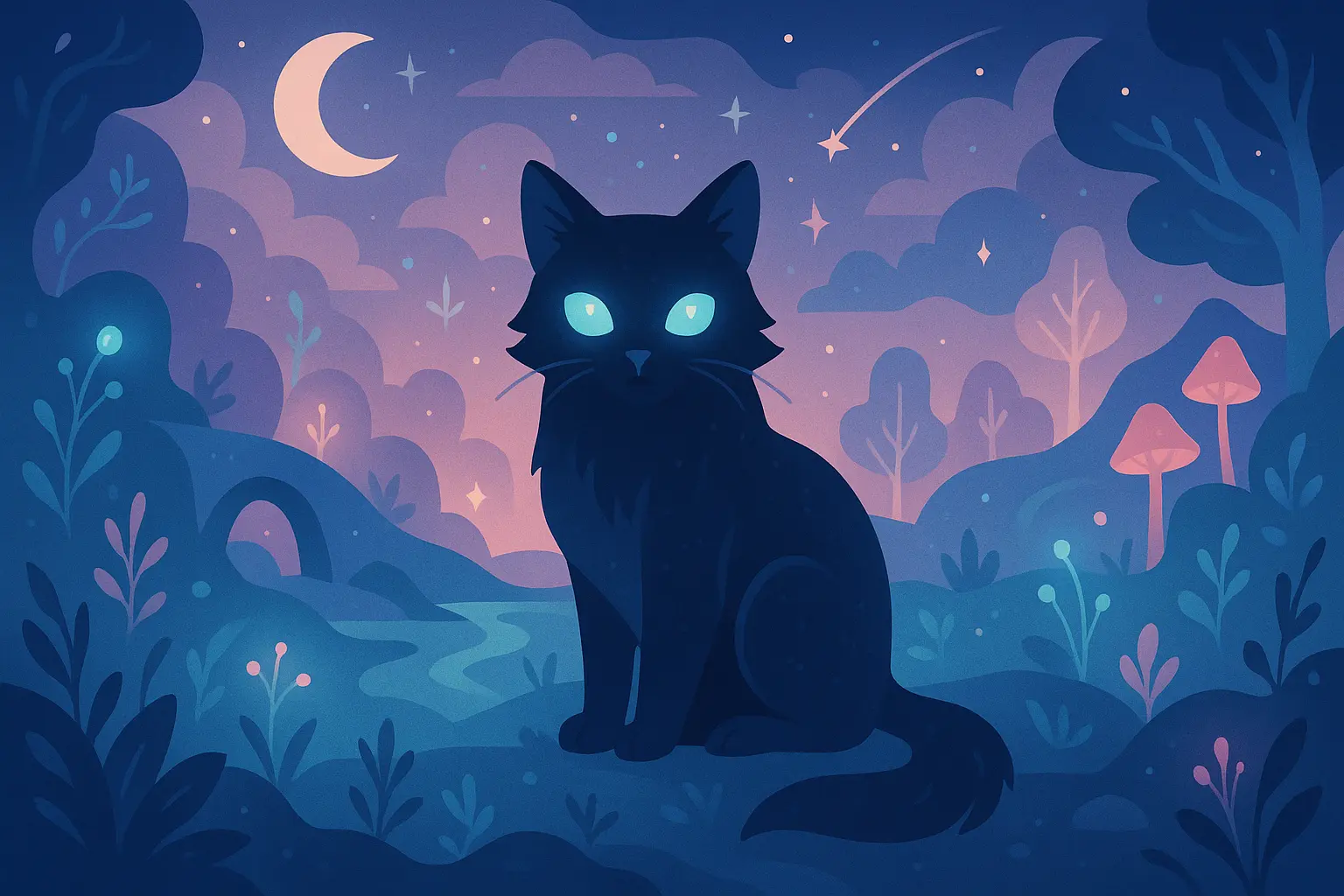
10. “The Cats of Ulthar” by H.P. Lovecraft
Set in Lovecraft’s dreamlands, this is the story of a town where killing cats becomes forbidden after a mysterious and slightly terrifying incident. It’s cosmic horror, but the cats are the good guys.
The story works because it plays on what we already suspect about cats – that they know things we don’t and have connections to forces beyond our understanding. When the people of Ulthar harm cats, they face consequences that seem to come from the cats themselves, or from powers that protect them.
Lovecraft understood that cats’ mysterious behavior and nocturnal habits make them perfect for supernatural stories. This tale suggests that harming cats might invoke retribution from unknown sources, which honestly feels about right if you’ve ever seen a cat’s death stare.
11. “Catseye” by Andre Norton
This science fiction novel features a young man with psychic abilities who can communicate with cats and other animals in a futuristic setting. It’s basically what we all wish we could do – actually understand what our cats are thinking.
Norton’s genius is portraying cats as intelligent partners rather than pets. The story suggests that cats have mental abilities we’re only beginning to understand, and that future technology might help us finally have real conversations with them.
The cats in this story maintain their essential cat nature while becoming more sophisticated partners. They’re still independent and mysterious, but their relationship with humans becomes deeper through enhanced communication.
12. “The Tombs of Atuan” by Ursula K. Le Guin
Part of the Earthsea series, this story features cats as mystical companions who understand magic and serve as guides between the human and supernatural worlds. Le Guin’s cats have magical abilities that feel like natural extensions of their real-world skills.
What I love is how Le Guin makes the cats’ magical abilities seem totally believable. Their stealth, night vision, and intuitive understanding of their environment translate perfectly into magical contexts. They’re not anthropomorphized – they’re just cats whose natural abilities work in a magical world.
The cats serve as guides and protectors while maintaining realistic behavioral patterns. They’re magical, but they’re still cats first.
13. “The Cat Who Walks Through Walls” by Robert A. Heinlein
Heinlein’s space adventure features cats as companions and guides through interdimensional travel. The premise is that cats already seem to exist partially in other dimensions (anyone who’s watched a cat stare at empty corners knows this feeling), so why not make it literal?
The story plays with the idea that cats’ mysterious behavior and ability to appear and disappear at will might actually be interdimensional travel. Heinlein takes this concept and runs with it, making cats natural navigators of space and time.
The cats maintain their independence and mystery while proving invaluable as partners in adventures that require quick thinking and supernatural awareness. It’s cats being cats, just in space.
Children’s and Young Adult Cat Stories
These stories respect kids’ intelligence while teaching important lessons about empathy, responsibility, and accepting differences. They’re not preachy, just good stories that happen to feature cats doing cat things in ways that make kids think.
14. “The Cat in the Hat” by Dr. Seuss
This is the story that revolutionized how we teach kids to read. Dr. Seuss proved you could use simple vocabulary to tell an engaging story that actually means something.
The Cat embodies that eternal childhood tension between fun and responsibility. He brings excitement and chaos, but he also cleans up his mess and faces consequences. Kids recognize this struggle between wanting to have fun and knowing you need to follow rules.
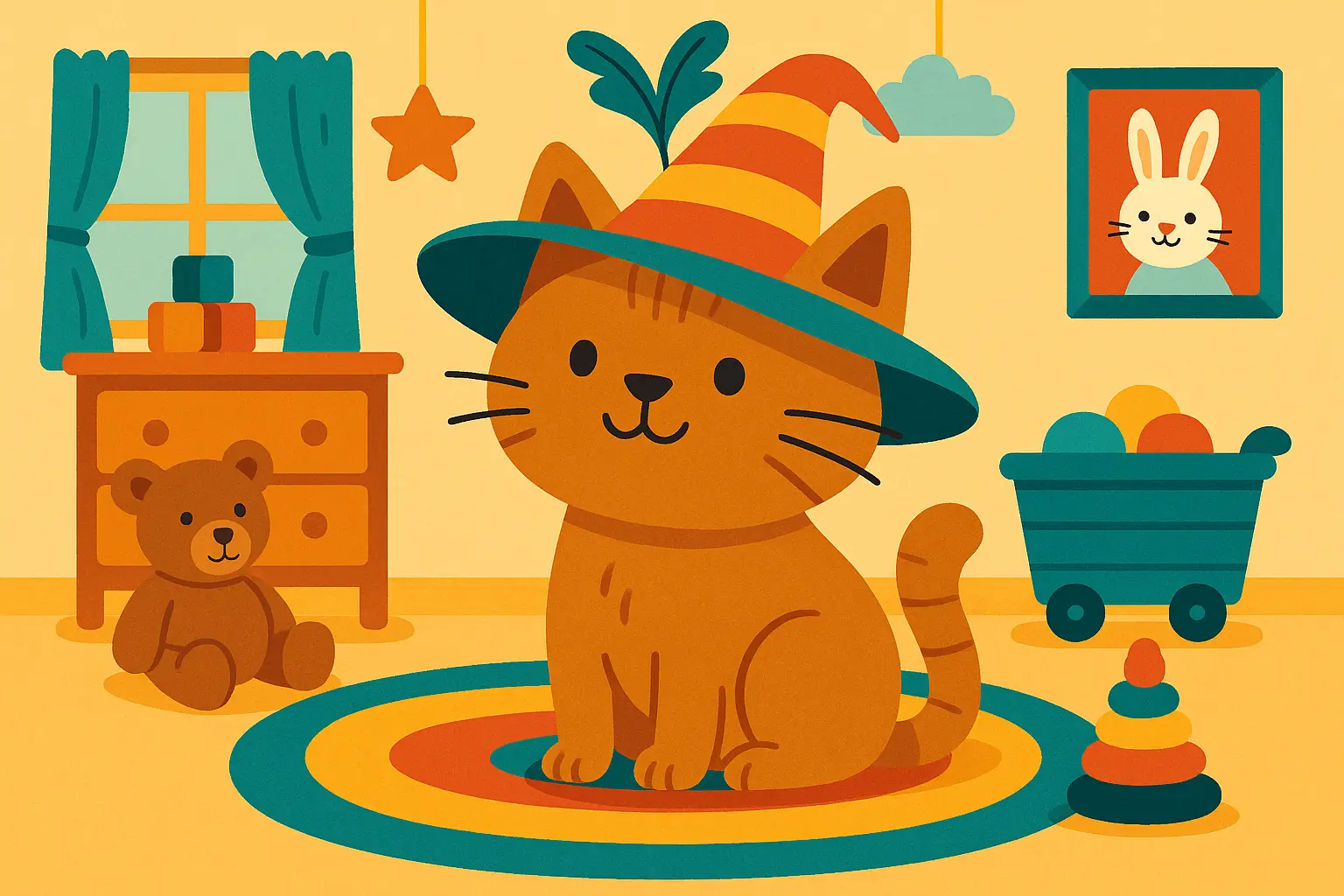
What makes it brilliant is how Seuss respects kids’ intelligence. The story feels sophisticated while using words beginning readers can handle. The Cat teaches kids about consequences and accountability without being preachy about it.
Much like how bedtime stories for kids serve multiple purposes, cat stories for children combine entertainment with valuable lessons about responsibility and empathy.
15. “Varjak Paw” by S.F. Said
This is a coming-of-age adventure about a sheltered house cat who has to learn street smarts and ancient cat martial arts to survive in the outside world. It’s basically “The Karate Kid” but with cats, and it’s amazing.
Said nails the balance between exciting adventure and real emotional growth. Varjak’s journey from pampered house cat to street-smart survivor mirrors what kids go through as they develop independence and confidence.
The martial arts elements feel completely natural in the cat world – after all, cats are naturally agile fighters. The story uses Varjak’s physical training as a metaphor for emotional and mental growth, showing kids that becoming brave is a process, not a switch you flip.
16. “The Church Mice Series” by Graham Oakley
These stories feature cats and mice living together peacefully in a church, which sounds impossible until you read them. They’re about cooperation, community, and finding ways to overcome differences that seem insurmountable.
The church setting is perfect for stories about tolerance and understanding. It becomes a sanctuary where natural enemies can become friends, showing kids that peaceful coexistence is possible even between traditional adversaries.
Each character brings different strengths to their community. The cats aren’t just predators and the mice aren’t just prey – they’re individuals who contribute unique abilities to their shared life. It’s a beautiful lesson about how diversity makes communities stronger.
17. “Catwings” by Ursula K. Le Guin
Le Guin’s series about cats born with wings is really about being different and learning that your differences can be superpowers. The flying cats face challenges that any kid who’s ever felt different will recognize.
The cats have to learn to navigate a world that doesn’t understand their abilities, developing confidence and finding their place in the community. It’s a gentle way to show kids that being unique isn’t something to hide – it’s something to celebrate.
Le Guin’s approach to fantasy is never scary or overwhelming. The cats’ wings represent any trait that makes a child feel different, offering hope and encouragement for young readers who are figuring out where they fit.
Mystery and Detective Cat Stories
These stories take advantage of what cats do naturally – observe everything, go places they shouldn’t, and generally be nosy – and turn those qualities into detective skills. Finally, cats’ tendency to knock things over and investigate everything actually serves a purpose.

18. “The Cat Who…” Series by Lilian Jackson Braun
This long-running series features journalist Jim Qwilleran and his two Siamese cats, Koko and Yum Yum, who help solve crimes through their weird cat behavior and apparent psychic abilities.
What makes these books work is that the cats don’t suddenly become human detectives. They act like cats – knocking things over, sitting on important papers, staring at random spots – but their actions provide clues that help Qwilleran solve mysteries.
Braun understood that cats notice things humans miss. Their heightened senses, natural curiosity, and ability to go places humans can’t make them perfect detective partners. Plus, anyone who’s lived with a cat knows they have an uncanny ability to show up exactly where the drama is happening.
19. “Joe Grey Cat Mystery Series” by Shirley Rousseau Murphy
These books feature cats who can speak and think like humans but hide this ability from most people. The cats actively investigate crimes and work to solve murders in their small California town.
The unique premise allows cats to be full detective protagonists rather than just sidekicks. They can gather information through their enhanced senses and physical abilities while applying human-level reasoning to solve complex crimes.
What adds tension is that the cats must hide their abilities from most humans, creating extra layers of complexity in their investigations. They have to solve crimes while maintaining their secret, which adds a fun element of cat-and-mouse (so to speak) to the mysteries.
20. “The Cat in the Stacks Mystery Series” by Miranda James
This cozy mystery series features a librarian and his Maine Coon cat who solve mysteries in a small Mississippi town. The library setting provides perfect opportunities for research and investigation, plus cats and libraries just go together naturally.
The stories work because they ground the mystery-solving in realistic settings and relationships. The librarian’s research skills complement the cat’s observational abilities, creating a believable partnership that makes both characters stronger.
The small-town setting gives you that cozy mystery feel where everyone knows everyone else’s business, creating the personal stakes and local knowledge that make amateur detective stories work.
21. “Midnight Louie Series” by Carole Nelson Douglas
These hard-boiled mysteries are told from the perspective of a street-smart black tomcat in Las Vegas. It’s noir fiction with a feline narrator, and somehow it totally works.
Midnight Louie’s street smarts and survival instincts translate perfectly into detective skills, while his cat’s perspective provides fresh insights into human behavior and motivation. He’s seen it all and judges everyone accordingly, which is peak cat behavior.
The Las Vegas setting enhances the noir atmosphere while providing plenty of opportunities for mystery and intrigue. The city’s 24-hour culture and constant influx of strangers create perfect conditions for the kinds of crimes Louie investigates.
Why cat detectives work so well: In Braun’s “The Cat Who Could Read Backwards,” Koko provides clues through totally normal cat behavior – knocking books off shelves, sitting on specific newspaper articles, showing unusual interest in certain people. When Koko keeps pawing at a particular painting, it leads to discovering it’s a forgery central to the murder. It’s genius because it respects both cat behavior and mystery conventions without forcing either.
Philosophical and Literary Cat Stories
These are the stories that’ll make you think deep thoughts about life, death, independence, and what it means to love someone who doesn’t always love you back the same way. They’re sophisticated but not pretentious, using cats to explore big questions about existence.
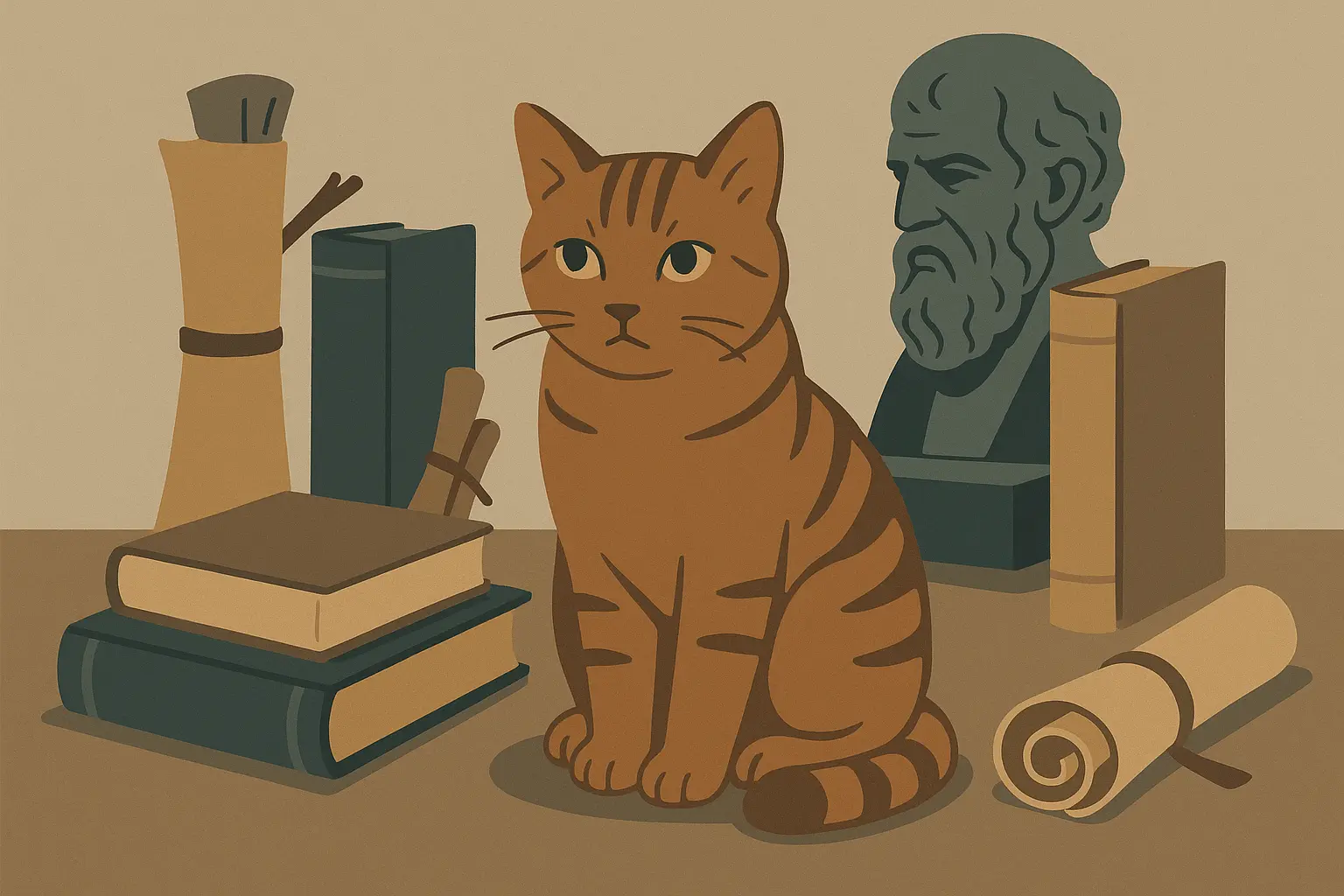
22. “The Master and Margarita” by Mikhail Bulgakov
This Russian masterpiece includes Behemoth, a giant black cat who’s actually a demon with a love of chess and vodka. He’s both hilarious and terrifying, representing the absurdity and complexity of existence through pure feline chaos.
Behemoth embodies everything unpredictable about cats while serving as Bulgakov’s commentary on politics, morality, and human nature. The cat-demon’s actions are simultaneously absurd and meaningful, which honestly describes most cat behavior pretty well.
What makes Behemoth work is that he maintains essential cat characteristics – independence, unpredictability, and a certain amoral perspective – while operating on a cosmic scale. He’s the ultimate cat: completely unbothered by human rules and expectations.
23. “The Guest Cat” by Takashi Hiraide
This quiet Japanese novella will absolutely destroy you in the most beautiful way. A childless couple’s lives are gently transformed by a neighbor’s cat who visits their garden, and it becomes a meditation on impermanence and the small moments that make life meaningful.
Hiraide shows how the cat’s presence affects everything – the couple’s daily routines, their relationship with each other, their awareness of the seasons and the natural world. It’s about how paying attention to small things can change how you see everything.
The story becomes a meditation on the Buddhist concept of mono no aware – the bittersweet awareness that everything is temporary. The cat’s eventual absence teaches the couple about loss and the preciousness of fleeting connections.
24. “Pangur Bán” (Ancient Irish Poem, Modern Adaptations)
This medieval poem about a monk and his white cat, both devoted to their scholarly and hunting pursuits, has inspired countless modern stories celebrating the parallel between human and feline dedication.
The original poem’s charm lies in recognizing that both monk and cat are engaged in similar activities – focused, solitary work that requires patience and skill. The monk studies manuscripts while Pangur Bán hunts mice, both finding satisfaction in their chosen work.
Modern adaptations expand on this theme, exploring how humans and cats can find companionship without interfering with each other’s essential nature. The relationship works because both species respect the other’s need for independence and purposeful activity.
25. “The Cat’s Table” by Michael Ondaatje
Ondaatje’s coming-of-age novel uses cats aboard a ship as metaphors for independence and survival during life transitions. The cats who adapt to life at sea mirror the human characters learning to navigate new circumstances.
The ship setting creates the perfect environment for exploring themes of transition and adaptation. The cats’ ability to adjust to shipboard life while maintaining their essential nature mirrors the protagonist’s journey toward maturity and self-discovery.
Ondaatje weaves cat imagery throughout the narrative to reinforce themes of independence and self-reliance. The cats’ survival skills become a model for how humans can adapt to change while staying true to themselves.
How to Pick Your Next Cat Story
Here’s how I think about choosing cat stories, depending on what my soul needs:
If you’re having a rough day and need hope: Go for the rescue stories, especially “A Street Cat Named Bob” or “Dewey.” They’ll remind you that good things can happen and that sometimes the smallest acts of kindness change everything.
If you want to laugh and think your cat might be plotting world domination: Try the mystery series, especially “Joe Grey” or “Midnight Louie.” They’ll make you look at your cat’s suspicious behavior in a whole new light.
If you’ve got kids who need to learn that being different is actually pretty cool: “Catwings” or “Varjak Paw” are perfect. They teach empathy without being preachy.
If you want something that’ll make you think deep thoughts: “The Guest Cat” or any of the philosophical stories will give you plenty to ponder while making you appreciate the cats in your life even more.
If you just want to escape into a good story: The fantasy and sci-fi options let you imagine cats with magical powers, which honestly doesn’t require that much imagination if you’ve ever lived with one.
Similar to how understanding story theme examples helps writers craft compelling narratives, recognizing what themes resonate with you helps you choose cat stories that’ll hit just right.
Why These Stories Actually Matter
Look, I could give you all kinds of academic reasons why cat stories are important, but here’s the real deal: they work because cats are basically us, but braver.
Think about it. Cats do what they want, love on their own terms, and somehow make us better humans just by existing. They’re independent but not isolated, affectionate but not needy, and they have this amazing ability to live fully in the moment while maintaining their dignity.
The therapeutic stuff is real: Reading cat rescue stories actually can help with depression and anxiety. There’s something about stories where love and care make a real difference that reminds us healing is possible.
They teach kids empathy without being obvious about it: When children read about cats – creatures who can’t speak for themselves but clearly have feelings and needs – they learn to pay attention to non-verbal cues and consider perspectives different from their own.
They bring people together: I can’t tell you how many conversations I’ve had with strangers that started because we were both reading cat books. There’s something about loving cats that creates instant connection.
They help us process loss: Many of these stories deal with death, separation, and grief in ways that feel manageable. They give us language and frameworks for dealing with the inevitable losses that come with loving any living being.
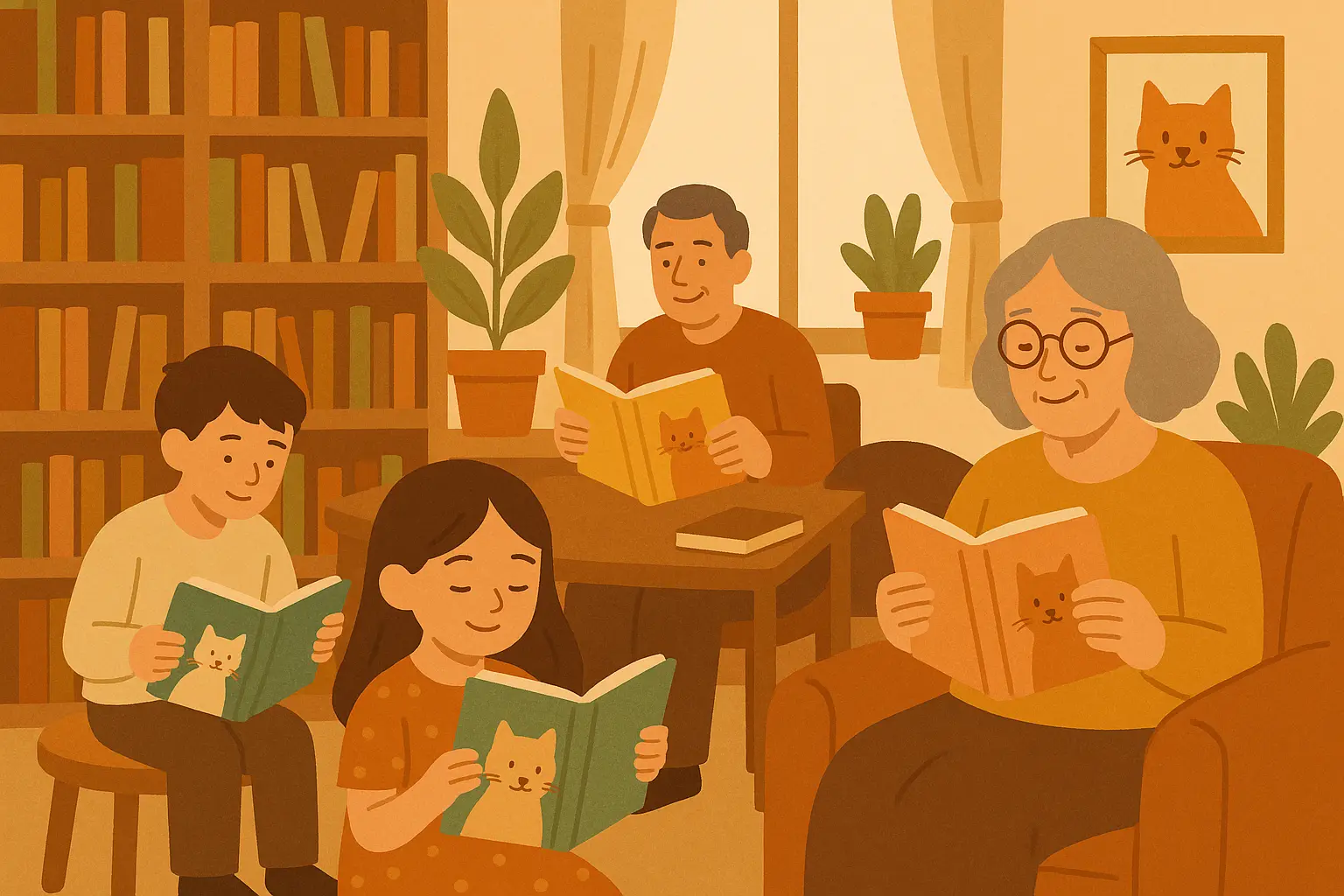
They celebrate independence: In a world that often pressures us to be constantly social and available, cat stories remind us that solitude can be healthy, that you don’t have to perform affection to feel it, and that maintaining your essential self while loving others is not only possible but necessary.
Final Thoughts
These 25 cat stories represent some of the best writing about our feline companions, but more than that, they’re great stories that happen to feature cats. They work because they capture something true about the complex, often contradictory relationships we have with these mysterious creatures who choose to share our lives.
From Kipling’s mythological exploration of why cats are the way they are to contemporary rescue narratives that show how healing happens in real time, these stories prove that cats aren’t just pets in literature – they’re teachers, healers, mirrors, and guides who help us understand ourselves better.
The best thing about cat stories is their incredible range. Cats can be supernatural guides, street-smart detectives, healing companions, or philosophical observers of the human condition. This versatility makes them perfect for exploring just about any theme or genre you can imagine.
Whether you’re looking for a good cry, a good laugh, or a good think, these stories deliver. They remind us that the bonds between different species can be profound, that independence and love aren’t mutually exclusive, and that sometimes the smallest acts of care can change everything.
Here’s what I’ve learned from reading hundreds of cat stories: the best ones aren’t really about cats at all. They’re about us, seen through the clear, uncompromising eyes of creatures who love us despite our flaws and somehow make us want to be better humans.
So grab one of these stories, curl up with your own cat if you have one (or dream about the cat you’ll adopt someday), and prepare to see the world through feline eyes. Trust me, the view is pretty amazing.

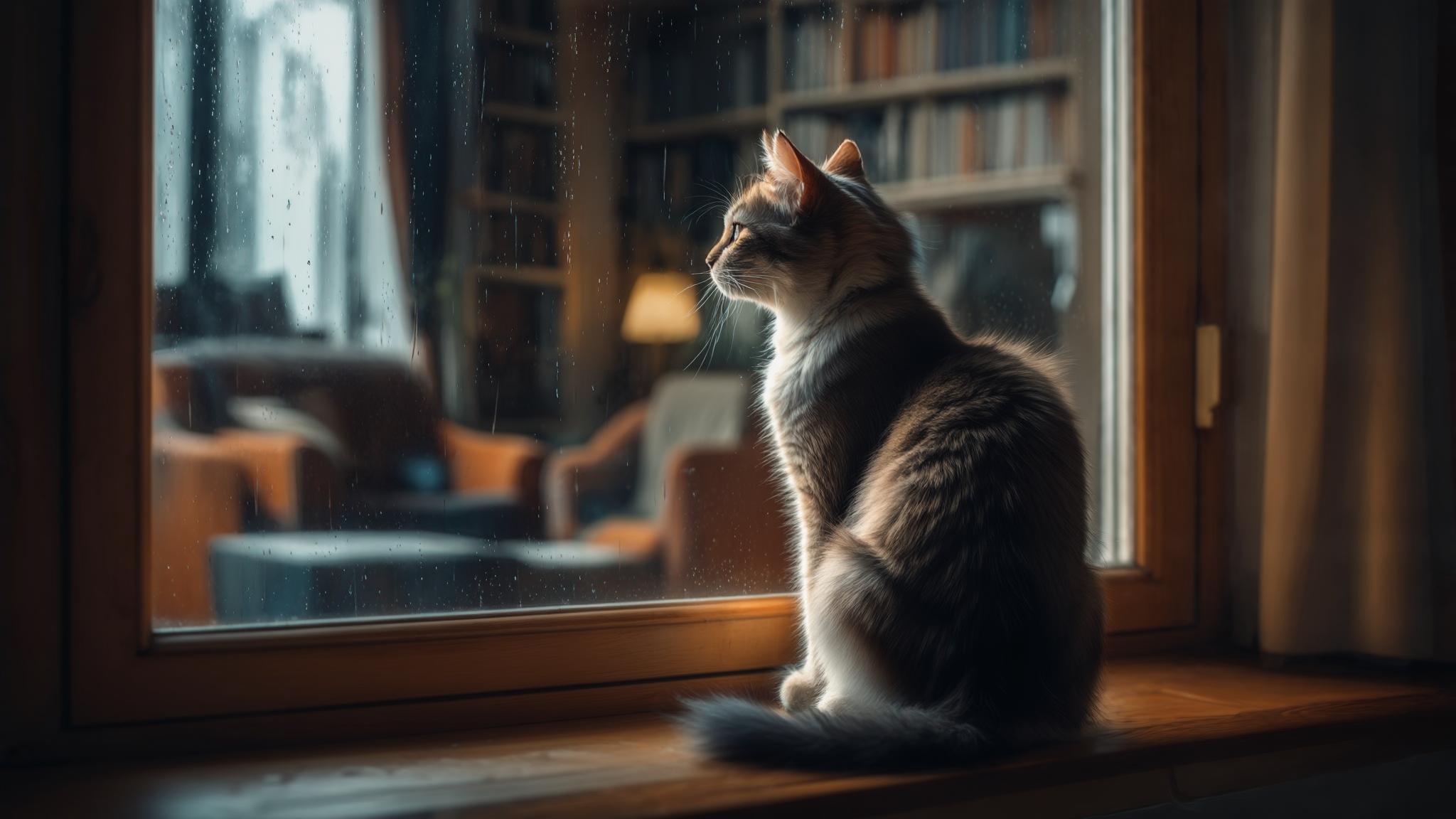

Add comment